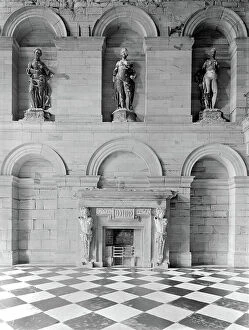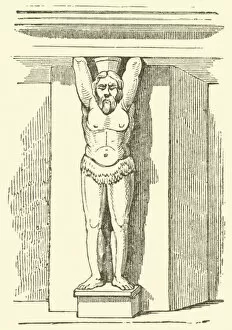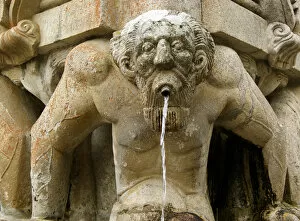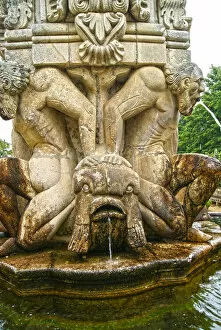Telamones Collection
Telamones, also known as atlantes or caryatids, are architectural elements that have captivated the world for centuries
All Professionally Made to Order for Quick Shipping
Telamones, also known as atlantes or caryatids, are architectural elements that have captivated the world for centuries. Originating in Italy during the 1st century BC, these magnificent sculptures can be found in various locations across Europe. One such place is Pompeii, where the Forum Baths showcase the grandeur of telamones. These larger-than-life figures stand tall and proud, supporting the weight of structures with their muscular bodies. Their presence evokes a sense of strength and power that leaves visitors in awe. In England's Lost Houses by Giles Worsley, we catch a glimpse adorning the saloon at Uppark in Sussex. The black and white photo transports us back to a time when these mythical beings were revered for their beauty and craftsmanship. The Country Houses of Sir John Vanbrugh by Jeremy Musson takes us on a journey through Seaton Delaval in Northumberland. Here, telamones grace both the Hall and main hall with their majestic presence. These enigmatic figures add an air of sophistication to these historic houses, reminding us of their rich cultural heritage. But it is not just in buildings where they are be found; they also make appearances in fountains and obelisks around the world. In Lamego, Portugal, mythical horned lion atlantes guard the base of a fountain while fish carvings adorn an obelisk nearby. These intricate details demonstrate how telamones seamlessly blend into different artistic styles and contexts. Whether engraved or sculpted from granite like those seen in Lamego or captured through engravings like Telamones (engraving), these captivating figures continue to inspire awe wherever they are found. With their strong physiques and timeless allure, telamones remind us of our shared human history and our eternal fascination with beauty and artistry.










